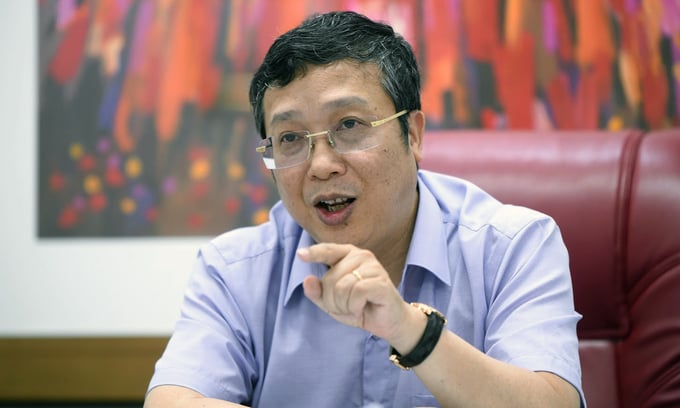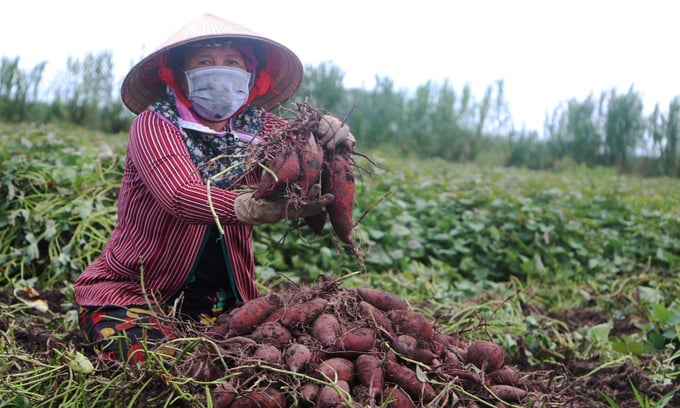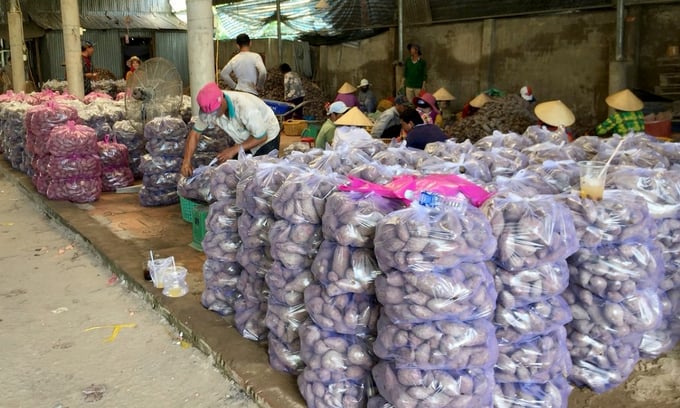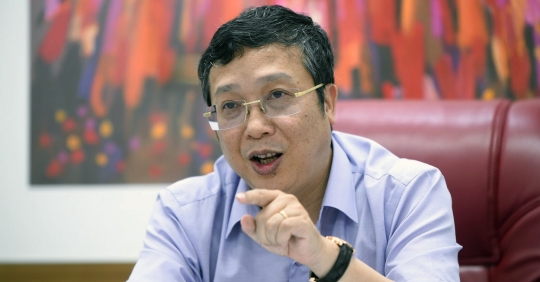On April 3, the Phytosanitary Department received a notice from the General Administration of Customs of China (GACC) announcing the results of the online inspection of Vietnamese sweet potato companies exporting to that country. Accordingly, 70 growing areas and 13 sweet potato packers have been licensed.
Newspaper Vietnamese culture Hoang Trung, Director of Plant Protection Department, to clarify the contents that will be employed in the coming period to make the most of this condition.
Many sweet potato areas in the country are about to get their main harvest. What significance does China’s export license for 70 growing regions and 13 packing plants in Vietnam have in promoting and developing this commodity chain, sir?
First of all, Vietnam and China have had many cooperations to promote agricultural trade over the years, including officially signing protocols for the export of key commodities.

Director-General Hoang Trung urged the subjects in the commodity chain to improve their sense of responsibility and take the initiative so that sweet potatoes can confirm their export position. Picture: tung thing.
On November 9, 2022, MARD and GACC signed another protocol on quarantine requirements for sweet potato products. This is a major boost that will help boost Vietnam’s export sales to the world’s most potential market.
At present, the sweet potato acreage across the country is about 100,000 hectares, with a total production of 1.2-1.3 million tons. It can be confirmed that Vietnam is very rich in production for export of sweet potatoes.
As the one-stop shop for pilot procedures, plant quarantine and negotiations on opening up agricultural markets, the Ministry of Plant Health implemented many positive and synchronous solutions immediately after the protocol was signed. First, the ministry coordinated with GACC to jointly prepare a set of conditions for export, including submitting a list of documents on the sweet potato growing area and packing plant for consideration. At the same time, the ministry had a meeting to discuss and plan online inspection with authorized entities and forthcoming export standards.
Since March 7, the Plant Protection Agency and the GACC have jointly inspected a number of establishments on the list. On April 3rd, GACC sent out an official notice sharing the results of the online assessment. Accordingly, 13 packaging plants and 70 growing areas were licensed. This places urgent demands immediately when sweet potatoes enter peak season.
In particular, to accompany and guide local specialized agencies in the dissemination, dissemination and organization of production in a methodical and sustainable way. This is not an overnight task, but must be done on an ongoing basis to avoid unnecessary oversights that can have ramifications for the entire industry.
It must be added that during the last inspection of GACC 10/23 of our packaging lines failed. This problem needs to be fixed as soon as possible so that the owners and related entities can clearly identify the cause and find a way to fix it to complete the technical file. The plant protection department will point out the problem: If the goods do not meet the standards, the goods will be dealt with immediately. In addition, exports of violators may be suspended.
Making an agreement to export sweet potatoes or other agricultural products abroad is both an opportunity and a challenge for farmers. With many key exports of the industry declining in value compared to the same period last year, estimating the export value of the first quarter of 2023 at US$11.19 billion, down 14.4%, the sweet potato could become one become lifeline , helping the entire industry to accelerate again in the second quarter of this year.

According to the Ministry of Plant Protection, the area under sweet potato cultivation in the country is about 100,000 hectares, with an annual production of 1.2 to 1.3 million tons.
Recently, the Ministry of Agriculture and Rural Development issued a document directing the issuance and management of planting area codes towards strong localization decentralization. What support and guidance does the Department of Plant Protection intend to implement on short-season items like sweet potatoes to help communities make the most of the opportunities ahead?
In order for a product industry to be able to develop sustainably, state management authorities, companies, industry associations and producers must face up to their responsibilities. For the site, it is clear that adding an export item requires the organization of additional resources, especially technical personnel when participating in continuous inspection and monitoring.
For businesses, they need to support both growers, cooperatives and people in the chain while ensuring records and registrations under GACC regulations. More than ever, domestic companies need to build and shape lasting connections at home and abroad. They should sign more long-term contracts, even large contracts with partners, to create long-term demand and help producers feel secure in farming.
For producers, including those directly employed, the issue of business ethics arises. We can’t just standardize this on paper, we have to put it into concrete terms through practical measures, for example by separating packaged goods and newly arrived goods. Even if they are small measures, over time the perception of the majority of people will change significantly.

Many big sweet potato stores like Vinh Long, Can Tho, Dak Nong… have prepared the conditions for the first shipment to China.
On the part of the crop protection department, we have carefully prepared plans for the day to welcome the first container of sweet potatoes to be exported to China. First, the department has sent a written notice to communities so they can proactively notify owners of planting area and packing facility codes. From there, these facilities plan and prepare all the conditions China needs to export promptly within a month.
Second, the ministry has planned and committed to organizing training courses soon on specific conditions for planting area codes, as well as some related technical requirements. The subject of the training is the owners of codes and local experts who must all check, monitor and hold hands to properly and fully comply with the quarantine requirements before bringing the goods to the border gate.
Third, we sent a document to transmit all the information related to the code of the growing area and the sweet potato packing plant to the regional plant quarantine departments and plant quarantine stations for prompt collection, inspection and control, according to the procedure that Vietnam has in the protocol obligated. There is a need to find ways to ensure that fresh sweet potato shipments exported to China have full phytosanitary certificates, growing area information and packaging facilities, and meet hygiene and food safety requirements such as: Especially not infected with harmful organisms, which China takes care of.
Fourth, the forms of propaganda and popularization for relevant target groups are constructed in a vivid, intuitive and ubiquitous manner. This is also an orientation to help all players in the sweet potato industry chain to improve their sense of responsibility, such as: exporters only buy raw materials from areas that have been allocated codes or packaging specifications, print labels, labels and information must be correct and traceable. These activities will help administrative authorities to reduce quarantine time and expedite customs clearance at the border gate, an extremely important factor when exporting fresh produce.
Fifth, the Plant Protection Bureau continues to request the community to inspect and monitor the production situation according to the actual situation. You will then send the list to the Ministry to compile demand for growing area codes and packing plants across the country and provide a basis before negotiating with GACC.
Thank you my Lord!

